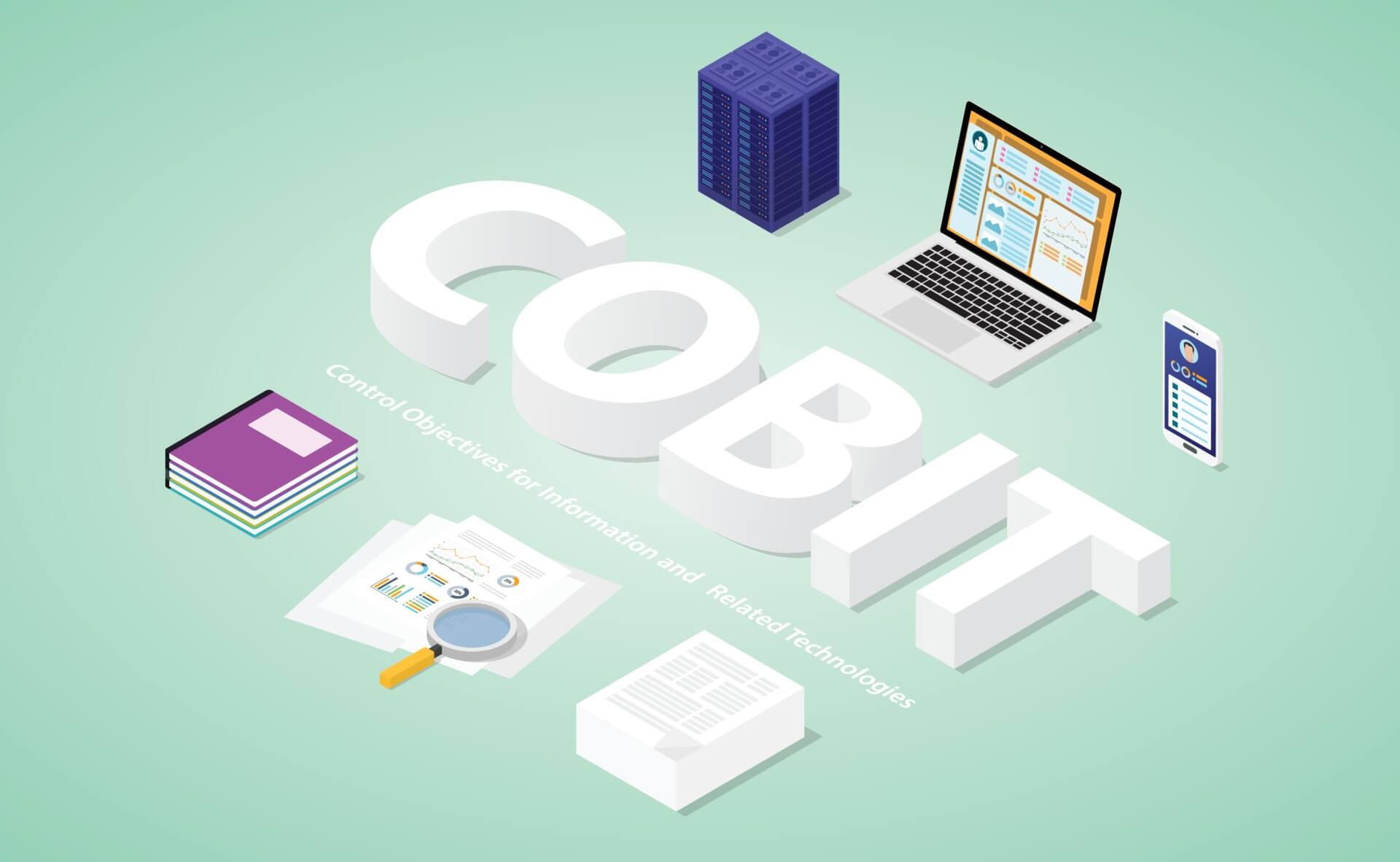COBIT, standing for Control Objectives for Information and Related Technologies, is a comprehensive framework designed to develop, implement, monitor, and enhance IT governance and management practices. Developed by ISACA, COBIT helps organizations align their IT goals with overall business objectives, ensuring optimal value from IT investments. The framework emphasizes regulatory compliance, risk management, and aligning IT strategy with organizational goals, making it a pivotal tool for businesses striving for operational excellence in IT processes. By adhering to COBIT, organizations can establish robust control measures, enhance their IT-related risk management, and ensure comprehensive IT governance, ultimately leading to sustained business growth and resilience against IT-related disruptions.

COBIT made its initial appearance in 1996, serving as a beacon for financial auditors to traverse the growing complexities of their IT landscapes. It was a pioneer, ushering an era where IT environments started aligning more closely with business objectives.
In 1998, ISACA unveiled a more encompassing version of COBIT, branching out to cover aspects beyond just audit controls, marking a significant expansion in its scope. The iterations that followed in the 2000s enriched the framework with extensive management guidelines, addressing emerging concerns around cybersecurity.
2013 saw the advent of the fifth COBIT version, introducing a plethora of tools, methodologies, and best practices, designed to be universally adaptable across diverse IT operations within enterprises. This version was a synthesis of insights from the fourth version and integrated standards from renowned entities like the ISO and included references to ITIL. It aimed at offering a holistic perspective and adaptable strategies for entities striving for operational excellence in IT domains.
Fast forward to COBIT 2019, the most recent and refined version by ISACA, it stands as a versatile and all-encompassing guide, tailored to suit enterprises of varied scales and objectives. This iteration presents six governing principles, a step ahead from the five in COBIT 5, and has expanded the processes aiding governance and management objectives from 37 to 40. This ongoing evolution underscores COBIT’s commitment to fostering enhanced IT governance and management across the ever-evolving corporate landscapes.
The COBIT framework offers templates and principles to assist in maximizing the value of IT within enterprises. Let's examine COBIT's benefits together:
COBIT ensures that IT processes align effectively with an organization’s broader business objectives, leading to better communication and collaboration between business and IT teams. This alignment facilitates strategic goal attainment and adds significant value to the organization’s overall performance.
By offering clear guidelines and practices for IT governance, COBIT aids organizations in optimizing their IT investments, ensuring resources are utilized effectively and IT services are delivered efficiently, ultimately contributing to organizational success.
COBIT provides a robust framework for identifying, assessing, and managing IT-related risks. It offers extensive risk management principles and guidelines, helping organizations mitigate potential threats and ensure the continuity and reliability of IT services.
COBIT’s emphasis on regulatory compliance helps organizations adhere to relevant laws, regulations, and policies, thereby avoiding legal issues and enhancing the organization's reputation. It provides a structured approach to compliance, facilitating internal and external audits.
With COBIT, organizations can develop and implement clear policies, plans, and procedures for IT governance. This clarity in governance structures supports informed, strategic decision-making processes and ensures that IT initiatives align with organizational objectives.
Organizations employing COBIT demonstrate a commitment to effective IT governance and management, increasing stakeholder trust and confidence in the organization’s capabilities to manage information and technology optimally.
COBIT’s versatile framework is adaptable to various enterprise environments, regardless of size, nature, or sector. Its scalability ensures that organizations can tailor the framework to meet their unique needs and evolve it in line with organizational growth and changes in the business landscape.
Adoption of COBIT fosters a culture of governance and accountability within organizations, promoting a proactive approach to managing IT resources, improving service delivery, and enabling continuous improvement in IT processes.
COBIT empowers those responsible for overseeing work operations by clarifying system activities and aligning them with the functional communication of the organization. This heightened clarity and alignment enable smoother, more effective workflows and optimize the interaction between different sectors within the facility. This, in turn, raises overall operational efficiency and contributes to the successful attainment of organizational objectives.
COBIT significantly contributes to elevating security levels within an organization. The framework provides structured guidelines and practices focusing on the safeguarding of informational assets and technological infrastructures. By implementing COBIT, organizations can fortify their defense mechanisms against potential threats, breaches, and disruptions, ensuring the resilience and reliability of their operations. This heightened security fosters a stable and secure operational environment, essential for maintaining organizational integrity and stakeholder trust.
In summary, COBIT plays a pivotal role in enabling organizations to achieve their strategic goals through effective IT governance and management. Its comprehensive approach not only enhances operational efficiency and compliance but also positions organizations to respond adeptly to the rapidly changing technology landscape.

According to it's latest version, COBIT 2019, there are six principles for a governance system:
The framework also outlines seven governance facets that must coincide in order to serve the aforementioned five principles:

COBIT 2019 and COBIT 5 are both frameworks developed by ISACA for IT governance and management. Although they share a common lineage, there are notable differences between COBIT 5, released in 2013, and COBIT 2019.
Governing Principles:
Customization:
Goals Cascade:
Performance Management:
Process Capability Level:
Updated Governance and Management Objectives:
Alignment with New Technologies and Trends:
Publication Format:
In short, while COBIT 5 laid a robust foundation for IT governance, COBIT 2019 builds upon this foundation and introduces several enhancements, refinements, and new elements, making it a more adaptable, customizable, and forward-looking framework for organizations seeking to optimize their IT governance and management practices.
Holding a COBIT 5 certification can be highly beneficial for IT professionals and organizations. Here are four advantages of obtaining this certification:
1. Enhanced Knowledge and Skills:
Individuals: Gain comprehensive knowledge and understanding of IT governance principles and practices, enabling them to contribute effectively to IT governance initiatives and projects within their organizations.
Organizations: Benefit from employees who are well-versed in globally recognized IT governance principles, contributing to improved strategic alignment and risk management.
2. Increased Marketability:
Individuals: Stand out in the job market and enhance their employability with a recognized certification, demonstrating their expertise and proficiency in IT governance to potential employers.
Organizations: Showcase commitment to best practices in IT governance, potentially attracting clients and partners looking for high standards of governance and management.
3. Improved IT Governance:
Individuals: Possess the skills and knowledge to implement and manage robust IT governance frameworks, contributing to enhanced organizational performance and goal attainment.
Organizations: Achieve improved overall IT governance, enabling better alignment with business objectives, optimized resources, and efficient and effective management of IT assets and resources.
4. Reduced IT Risks:
Individuals: Understand how to identify, evaluate, and manage IT-related risks effectively, supporting organizational efforts to mitigate potential threats.
Organizations: Benefit from reduced exposure to IT-related risks, thanks to sound governance practices and well-informed decision-making processes driven by certified professionals.
These advantages underscore the value of COBIT 5 certification in fostering IT governance excellence, enhancing individual career prospects, and driving organizational success in the contemporary IT landscape.
COBIT is often compared to other governance frameworks due to its comprehensive approach to IT governance and management. Below is a comparison with other renowned frameworks.
COBIT:
ITIL:
COBIT:
ISO/IEC 27001:
COBIT:
TOGAF:
If you need a more detailed comparison, read this: COBIT vs. TOGAF - Which One is Better?
COBIT:
PMBOK:
While all the above-mentioned frameworks serve distinct purposes in IT and business governance, COBIT stands out for its comprehensive and holistic approach to IT governance and management, covering various aspects of IT and aligning them with business needs. Its adaptability and alignment with other standards make it a versatile choice for organizations aiming to achieve excellence in IT governance while considering integration with other frameworks depending on their specific needs and goals.
The COBIT framework is designed to be adaptable and suitable for companies of all sizes and industries, providing a comprehensive approach to IT governance and management. Its principles and practices aim to align IT functions with business objectives, regardless of the organization’s scale or domain. While COBIT’s extensive and detailed framework can be beneficial for every company seeking to optimize its IT governance, the implementation may vary, and companies need to tailor the framework to their specific needs, resources, and organizational structures. This flexibility and adaptability make COBIT a versatile tool that can drive value creation, support strategic alignment, and manage risks in diverse organizational contexts.
In conclusion, the COBIT framework stands as a pivotal structure in the realm of IT governance and management, offering organizations a holistic and adaptable approach to align IT processes with business objectives, manage risks effectively, and ensure optimal utilization of IT resources. Whether juxtaposed with other governance frameworks or examined independently, COBIT’s versatility and comprehensiveness make it an invaluable asset for organizations across various sectors.
At Bilginç IT Academy, we recognize the transformative potential of effective IT governance and are committed to empowering individuals and corporations through our accredited COBIT courses. With nearly 30 years of experience in the IT training field, we offer meticulous and insightful training sessions that can be organized anywhere as per our clients’ convenience. By fostering an environment of learning and proficiency, we aim to catalyze organizational excellence and value creation in the evolving IT landscape.